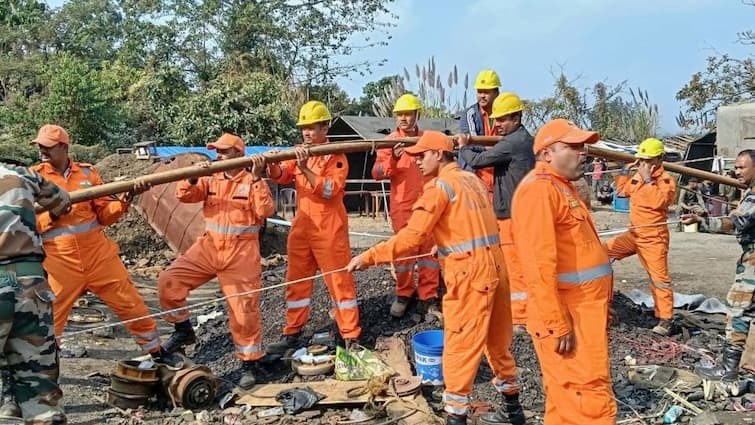
The rescue operations to save eight trapped workers in a coal mine in Assam's Dima Hasao district have reached a critical phase as efforts stretch into the fourth day. Despite the involvement of multiple central and state agencies and all three arms of the Indian Armed Forces—the Army, Navy, and Air Force—only one body has been recovered so far, leaving the fate of the remaining workers uncertain.
A Devastating Incident: How the Workers Became Trapped
The tragic incident occurred at the 3 Kilo Coal Quarry in Umrangso, where a sudden influx of water inundated the mine. This unexpected flooding trapped the workers in a 'rat-hole' mine—a narrow and dangerous type of excavation common in the region. The water, now mixed with coal, has turned toxic and murky, creating a hazardous environment for rescue teams.
Toxic and Murky Water: A Daunting Obstacle for Divers
The water inside the mine poses one of the most significant challenges for the rescue teams. Contaminated with coal, the water has become highly acidic, limiting visibility and maneuverability for divers. Navy clearance divers, trained in deep-depth diving and recovery, are risking their lives in these perilous conditions. The situation became even more dangerous when they retrieved the body of one of the trapped workers on Wednesday.
The use of remote-operated vehicles (ROVs) has also proven difficult due to the dense, murky water. Officials have noted that these conditions hinder the effectiveness of such advanced technologies, which could otherwise expedite the search and rescue efforts.
Reinforcements from Western Coalfields Limited
To overcome these challenges, an expert team from Nagpur-based Western Coalfields Limited (WCL) has joined the rescue mission. The team brought with them specialized equipment, including a high-capacity submersible pump capable of extracting 500 gallons of water per minute from a depth of 150 meters.
The WCL team, comprising five members, arrived at the site via a C-130 Hercules transport aircraft on January 8. Along with the pump, they carried a complex network of cables, starters, and other essential tools to aid in the operation.
Complex Mine Structure: A Maze Without a Map
Another significant hurdle is the layout of the mine itself. The quarry consists of a main shaft that branches out into four smaller tunnels, which in turn split into a sprawling underground network. The absence of a blueprint or map of the mine adds to the difficulty, leaving rescuers to navigate blindly through this labyrinthine structure.
Additionally, continuous water seepage into the tunnels further complicates the mission. "There are channels that are pouring water back into the tunnel," explained Harmeet Singh, Special Director General of Police.
The Road Ahead: A Race Against Time
The ongoing rescue operations in Dima Hasao are a grim reminder of the dangers associated with unregulated mining and the immense risks faced by rescue teams. While efforts are being intensified with the deployment of additional resources and expertise, the challenges of toxic water, complex mine structures, and the absence of mine plans continue to hinder progress.
As the rescue teams push forward, the nation waits with bated breath, hoping for a miracle that will save the lives of the remaining workers trapped in the coal mine. The situation underscores the urgent need for stricter safety regulations and better preparedness in the mining industry to prevent such tragedies in the future.
Read More: Shashi Tharoor Shares Insights from State Dinner Hosted for Vladimir Putin in New Delhi

 Share
Share



